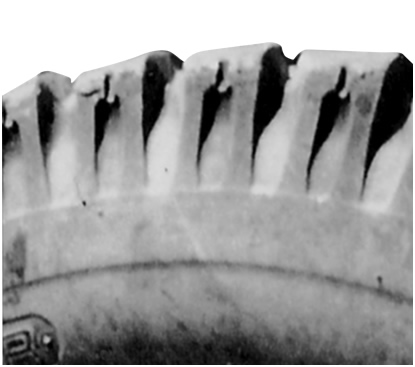The gauge on the hose fitting will show if you have approximately enough air pressure. This will give you the most accurate reading. The most important piece of equipment you need is an accurate tire pressure gauge.
To check the air pressure in your tires , start by looking in the owner’s manual or the inside of the driver’s door for the standard inflation pressure. Next, unscrew the cap from the valve stem on the tire and press the air pressure gauge evenly onto the valve stem. Check the air pressure before driving. Driving heats up the air inside the tire , which causes the air to expand and gives a higher reading. Many tires have a tire pressure value written on the sidewalls.
Tires have been known to lose up to 1psi (pounds per square inch) every month, so check all tires , including your spare, once a month (or before a long trip). Adjust the pressure in all the tires in the same way. Be sure to check the air pressure when the tire is cool, or when they are the same temperature as the outside air and have not been driven on.
Use a reliable gauge to check your tire pressure fig. A good tire gauge, as they say, is a driver’s best friend. Filling tire pressure is a pretty simple process. The first thing you have to determine is. Checking your tire pressure is a simple process.
However, if your tires are consistently underinflated you might. Under- or over-inflation, however, can adversely affect handling and gas mileage, not to mention the life of your tires. Often a tire will look fine, but it is actually low. When you check tire pressure , be sure to check all four tires. Find the recommended PSI for your.
Incorrect tire pressure can lower gas mileage by 0. Tire pressure is very important! The wrong pressure can lead to tire failure and accidents, so make a habit of checking tire pressure often - at least once a month. Drive in to your local Big O Tires , and we’ll check it for you - for free! The life of your tire decreases.
When your tires are inflated too much, the rubber rounds out at the top of the tire when you’re driving, and the center will quickly wear out. You’ll also reduce your traction and you could even cause a blowout. So, what’s the right tire pressure for your vehicle?
In this video I show you how to find the correct tire pressure. Each tire requires a certain amount of air to function properly. When your tires have the correct amount air, your car gets better mileage, your tires will last longer and your car will have better handling. There are a couple of ways to check the system.
CHECK AIR PRESSURE REGULARLY. Most people forget about their tires until something goes wrong. The truth is, tires lose pressure daily.
In cool weather, a tire will typically lose one or two pounds of air per month. In warm weather, tires lose even more air. If you check the tire pressure on Monday, and it’s good to go, and by Wednesday you notice a difference in your driving and handling, you check the pressure , and it’s down at least 1psi or more, you have a leak. Late-model cars come with a built-in tire pressure monitoring system that warns the driver if a tire needs air.
If the reading is lower than recommende you will need to fill the tire with air. TPMS Light goes on and off When tire pressure (s) are near the level that triggers an alert, fluctuating temperatures may be causing your TPMS light to turn on and off. Look Up Quick Now!
Properly inflated tires will provide better fuel efficiency, longer tread life, quicker steering response and smoother, more comfortable ride. Driving as little as a couple of miles can lead to erroneous readings. Read the tire pressure for each tire , and compare it to the recommended pressure. The tire pressure gauge will indicate how much pressure the tire has.
Be sure that it reads the same as what your tire PSI indicates. Also, be sure that all four tires have the same tire air pressure or PSI reading. Nearly percent of all car accidents happen because of faulty tires. Each year, 2people are seriously injured in a car accident that was a direct result of poor tire pressure.
Knowing how to check tire pressure against the right sources, for the right conditions, can help save you money on tires and gas.
It will also prevent nasty blowouts, flats, needless accidents, and damage to your alignment. Use the inflation pressure recommended by the vehicle’s manufacturer, not the maximum pressure inscribed on the tire ’s sidewall. Quick Tip: If this light comes back on, check the tire again to make sure the tire has the proper air inflation pressure. If your vehicle is equipped with an Indirect TPMS and the light comes on, it may mean the wheel speed sensor is bad. If the tire is low, you have an air leak and should have the tire fixed.
As discussed in some of our other articles on inflation pressure , tires must be properly inflated to achieve maximum handling, traction, and durability as designed by the tire manufacturer.

It is the air pressure that supports the weight of your vehicle, not the tire itself.
No comments:
Post a Comment
Note: only a member of this blog may post a comment.